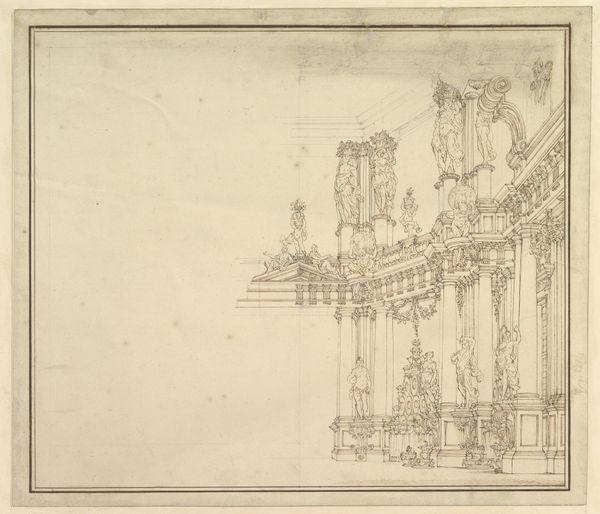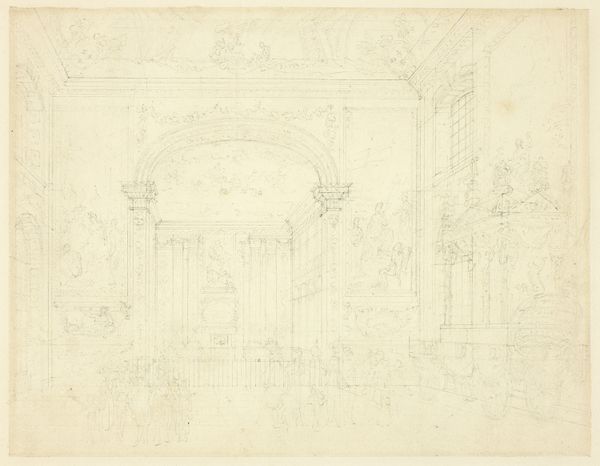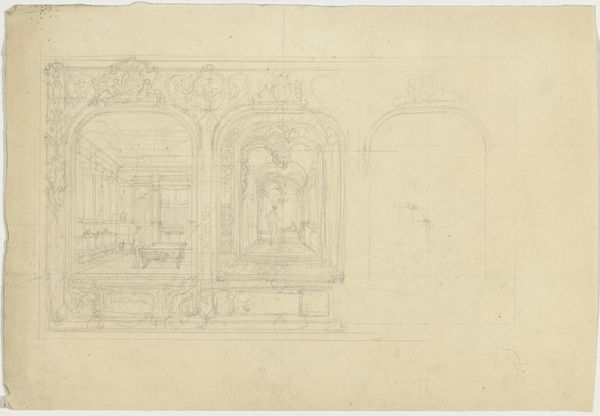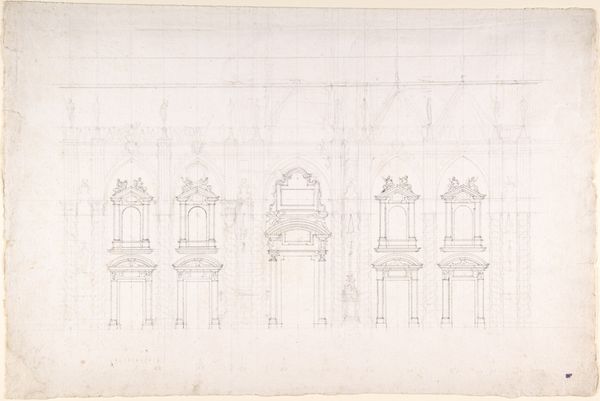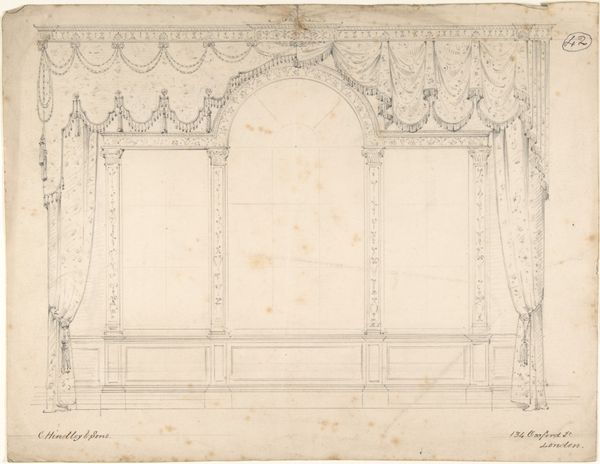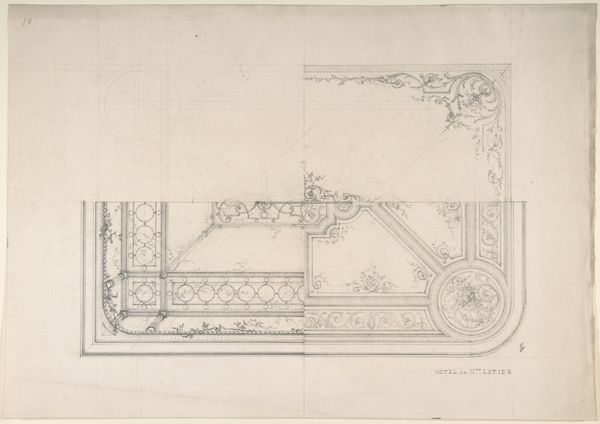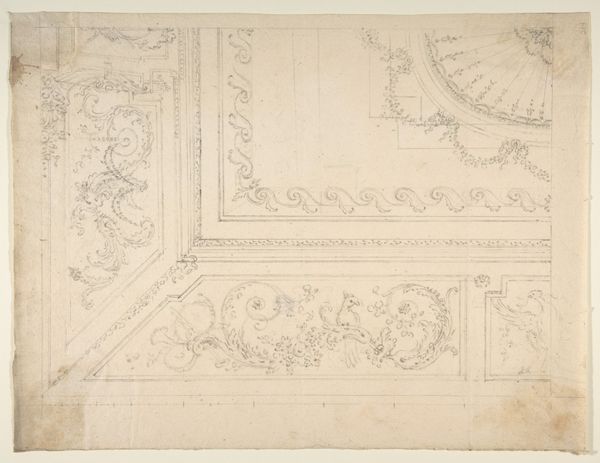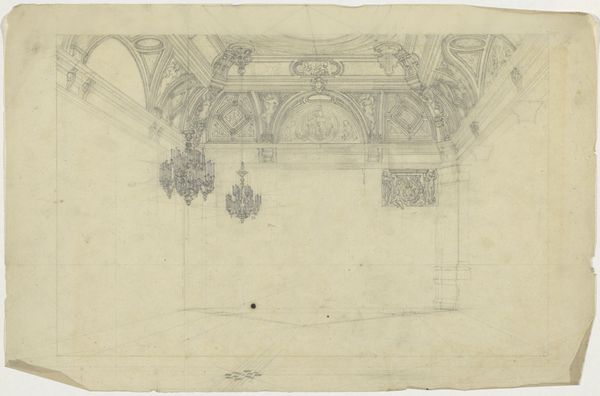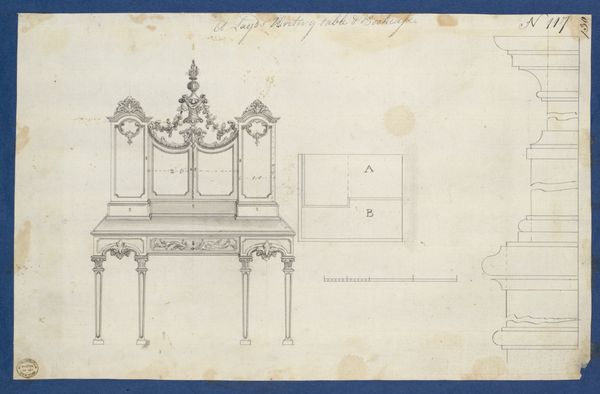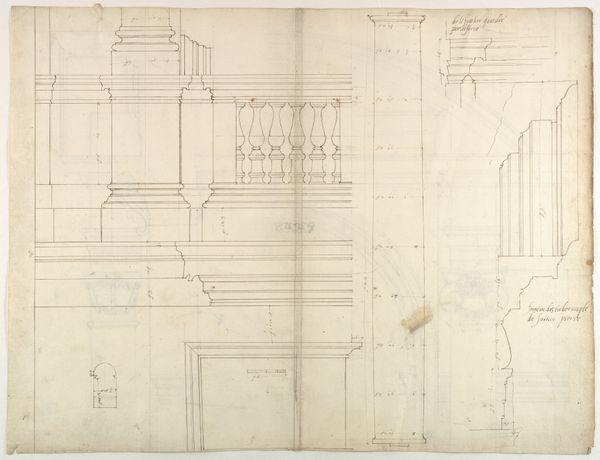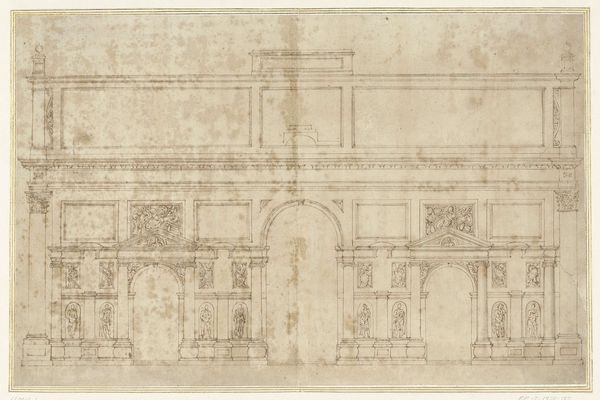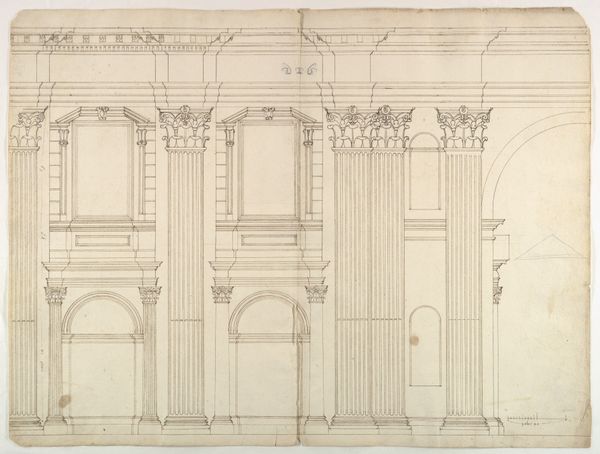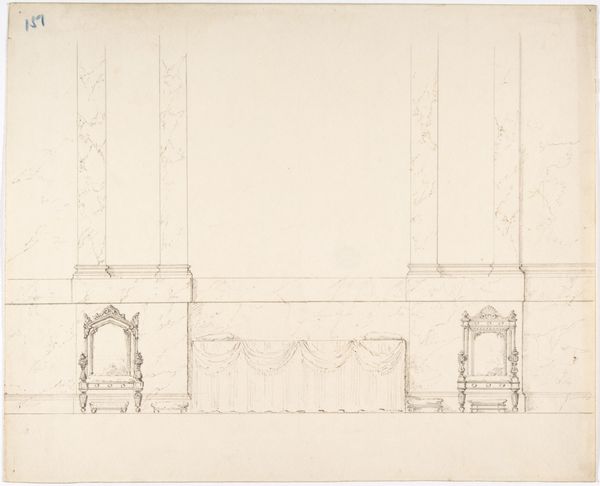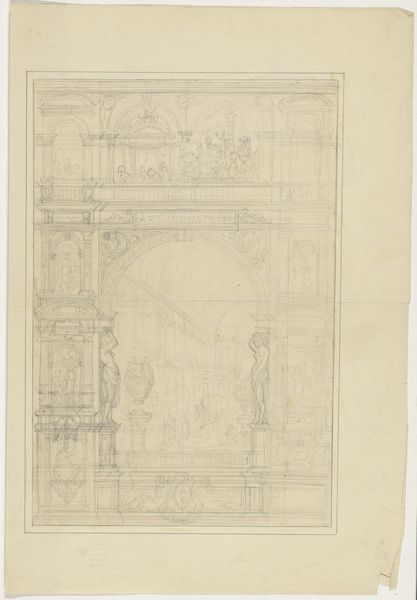
drawing, paper, pencil, architecture
#
drawing
#
classical-realism
#
paper
#
geometric
#
pencil
#
cityscape
#
architecture
Dimensions: height 320 mm, width 490 mm
Copyright: Rijks Museum: Open Domain
Editor: Here we have “Facade van een gebouw,” or "Facade of a Building," a pencil drawing on paper from the Firma Feuchère, created sometime between 1830 and 1850. It feels so meticulously planned and symmetrical. What can you tell me about this drawing? Curator: Well, first we should consider the materiality of the drawing itself. The pencil on paper reveals a lot. Think about the access to materials at this time. Pencil, while becoming more common, was still a manufactured item. Paper too. The drawing speaks to a world increasingly structured by industrial means of production. Editor: So you are suggesting that even the tools used to create art carry significance? Curator: Exactly. And consider the architectural rendering itself. Who commissioned such drawings? Were they for potential patrons, builders, or part of some larger marketing effort for Firma Feuchère? This is about more than just aesthetics; it's a document of economic and social exchange. The draftsmanship speaks to training, skill as a commodity, the objectification of labor in architectural practice... Editor: So the act of meticulously rendering a building facade becomes part of a larger economic process? How does classical-realism play into that? Curator: Precisely! This classical style projects ideas of permanence and stability that wealthy patrons want associated with their status, projecting their power and cultural aspirations through the very bricks and mortar represented. Now, look at the precision, the detail – what kind of labor went into creating it? Editor: It makes you consider not just the final product but all the people involved in the making, from the pencil manufacturer to the architect! I hadn't thought about that before. Curator: That’s the beauty of seeing art through the lens of materials and production; it really grounds the work in its historical context and exposes layers of meaning.
Comments
No comments
Be the first to comment and join the conversation on the ultimate creative platform.
